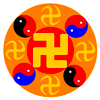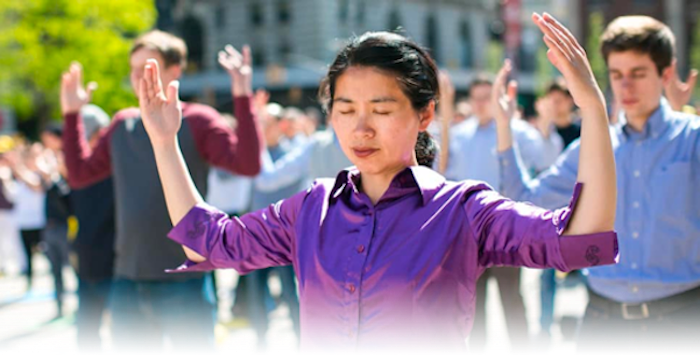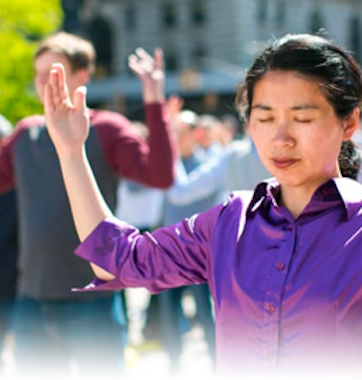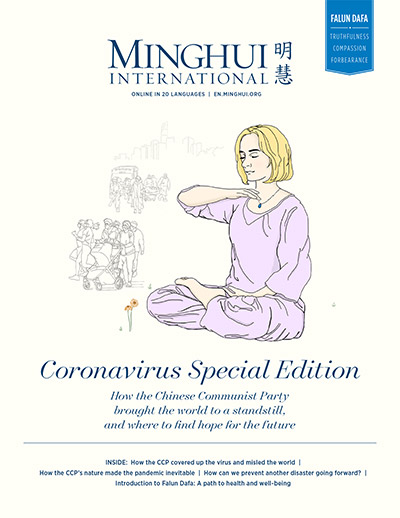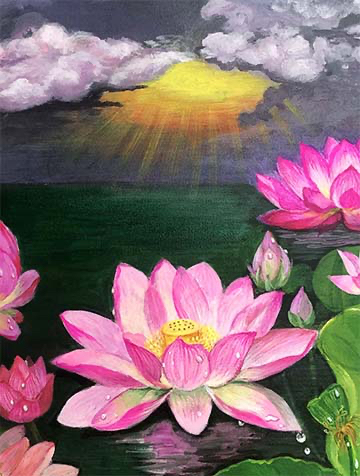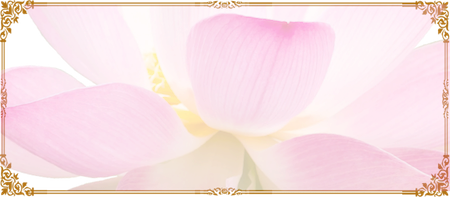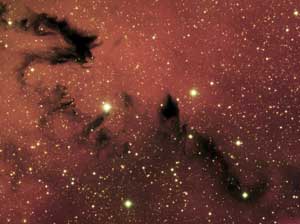
NGC 6559 (Credit: Gemini Observatory)
(Clearwisdom.net) On August 27, 2005, the Gemini Observatory released an image of NGC 6559 that resembles "an ethereal-looking Chinese dragon." [1]
"NGC 6559 is part of a larger star-forming region in the southern constellation Sagittarius. The dark structure that resembles a Chinese dragon is caused by cool dust that absorbs background radiation from hydrogen gas that glows in red light due to ionization from nearby stars. This region lies less than one degree away from the popular Lagoon Nebula (M8), and is located some 5,000 light-years away toward the center of our Milky Way galaxy. At this distance the length of the cloud (diagonally across the image) is about 7 light-years." [1]
The image was obtained using the Gemini Multi-Object Spectrograph (GMOS) during the first half year of 2005. [2]
China is the home of the legends of Chinese dragons. The Chinese people have been referring themselves as the offspring of Chinese dragons for thousands of years. There are a large number of records pertaining to the existences of Chinese dragons in Chinese history. In Buddhist scriptures, there are talks about the Eight Groups of Heavenly Dragons. In fact, according to legends, two of the ancient Chinese kings were closely related to the Chinese dragons. One of them might even have been the blood relative of a Chinese dragon.
According to The Biography of Chinese Kings and Emperors, Emperor Yan, also known as Shennong, lived some 5,000 years ago and taught the ancient Chinese the practices of agriculture. In fact, his name Shennong means "Divine Farmer." His mother was named Rensi. She was the wife (princess) of Shaodian. One day when she had an excursion in Huayang, she saw a Chinese dragon flying over her head. She immediately felt a life growing inside her womb. She gave birth to Shennong when she returned from the excursion.
The Mountain-Sea Sutra is among the most famous of ancient Chinese mythology. It tells the story of a great battle where Chi You (an ancient Chinese barbarian) ordered Ying Dragon (a Chinese dragon in charge of water) to bring a storm over the area of Jizhou to repel the fog. According to Huannanzi, when Huang Di ascended to the throne, a blue Chinese dragon came and kowtowed to him. According to The Records of the Grand Historian by Sima Qian, the first systematic Chinese historical text, a Chinese dragon came to pick up Huang Di and flew into the sky when he completed his cultivation practice. When he got onto the dragon, about 70 of his court subjects who did not wish to part with Huang Di tried to get on the dragon as well. Some of them tried to grasp the dragon's whiskers. However, the dragon shook off all the subjects. They watched in tears as Huang Di ascended to heaven with the dragon.
A few months ago, someone took a photograph of the Tibetan Plateau, the Roof the World, from an airplane. The photograph showed what many believe to be the body of a giant Chinese dragon covered with dragon scales. To them, it proves the existence of Chinese dragons. However, as mankind's morality is diminishing, these divine creatures rarely show themselves to us.
Currently, heaven and earth are undergoing enormous changes. The Holy King Who Turns the Wheel is now in the human realm, rectifying and cleansing the entire universe, including the human realm. The evil Red Dragon, a characterization of the Chinese Communist Party' specter, has been slain. As of September 1, 2005, over 4 million people have quit or denounced the Chinese Communist Party. Perhaps the image of a region in the center of the Milky Way as a Chinese dragon is a sign that great changes are about to happen in China. For those Chinese people that have not yet withdrawn from the CCP, perhaps they should pay attention.
References:
[1] Spaceflight Now: A Chinese dragon and a knotted galactic embrace http://www.spaceflightnow.com/news/n0508/27gemini/
[2] Gemini Observatory: A Chinese Dragon and a Knotted Galactic Embrace http://www.gemini.edu/index.php?option=content&task=view&id=150
This article is an edited version of http://www.pureinsight.org/pi/articles/2005/9/5/3306.html
Category: Perspective
